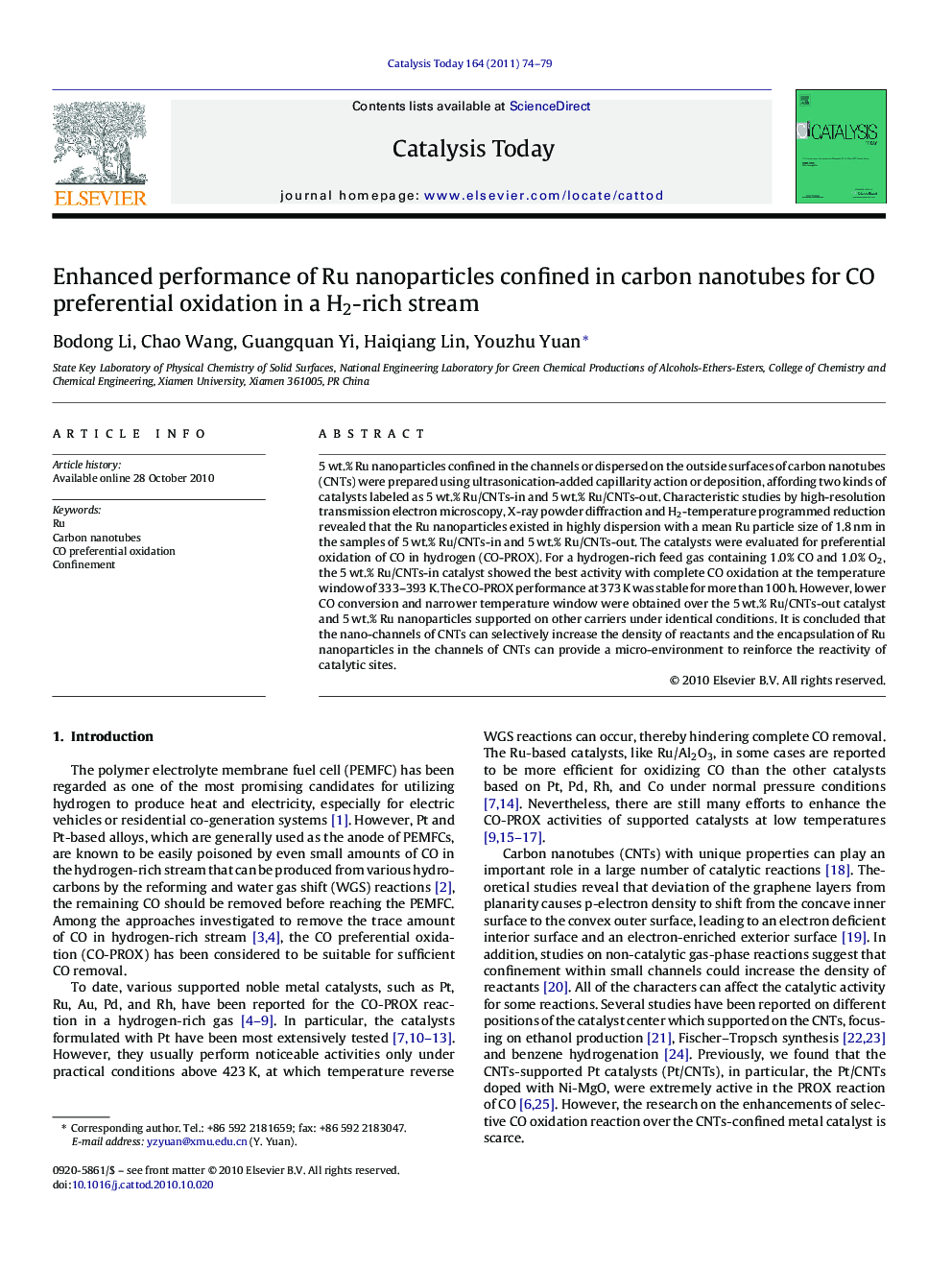| Article ID | Journal | Published Year | Pages | File Type |
|---|---|---|---|---|
| 56301 | Catalysis Today | 2011 | 6 Pages |
5 wt.% Ru nanoparticles confined in the channels or dispersed on the outside surfaces of carbon nanotubes (CNTs) were prepared using ultrasonication-added capillarity action or deposition, affording two kinds of catalysts labeled as 5 wt.% Ru/CNTs-in and 5 wt.% Ru/CNTs-out. Characteristic studies by high-resolution transmission electron microscopy, X-ray powder diffraction and H2-temperature programmed reduction revealed that the Ru nanoparticles existed in highly dispersion with a mean Ru particle size of 1.8 nm in the samples of 5 wt.% Ru/CNTs-in and 5 wt.% Ru/CNTs-out. The catalysts were evaluated for preferential oxidation of CO in hydrogen (CO-PROX). For a hydrogen-rich feed gas containing 1.0% CO and 1.0% O2, the 5 wt.% Ru/CNTs-in catalyst showed the best activity with complete CO oxidation at the temperature window of 333–393 K. The CO-PROX performance at 373 K was stable for more than 100 h. However, lower CO conversion and narrower temperature window were obtained over the 5 wt.% Ru/CNTs-out catalyst and 5 wt.% Ru nanoparticles supported on other carriers under identical conditions. It is concluded that the nano-channels of CNTs can selectively increase the density of reactants and the encapsulation of Ru nanoparticles in the channels of CNTs can provide a micro-environment to reinforce the reactivity of catalytic sites.
